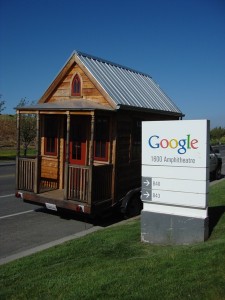 Summary. Google now offers a free Public Domain Name Server (DNS) service to help provide enhanced Internet browsing speed and security.
Summary. Google now offers a free Public Domain Name Server (DNS) service to help provide enhanced Internet browsing speed and security.
Configuration. Google provides detailed configuration instructions. However, those familiar with DNS settings can simply enter 8.8.8.8 and 8.8.4.4 as the primary and secondary DNS server addresses for their computer, iPhone, iPod, or other wireless device. If your router is configured to use the Google DNS, then everyone connected to the router will benefit as explained below.
Phone Support. Google is offering something unheard of customer support these days; a toll-free technical support phone number. Phone support for U.S. callers can be obtained by calling 877-590-4367 and those outside the US can call 770-200-1201.
Background Details. Whenever you visit a website, your computer must first check with a Domain Name Server to find out where that website is hosted. The IP address of the host must be determined before the website can be displayed. The Domain Name Server used by your computer will typically change depending on where you are connecting to the Internet.
The DNS Problem. Any given Internet Service Provider (ISP) may offer an overburdened and slow DNS, or one that could be hacked into for malicious purposes. If a Denial of Service (DoS) attack is launched against the DSN server you are relying upon, then your Internet browsing will be slow, even if you have a “fast” connection to the Internet.
Beyond Bandwidth Speed Tests. A typical bandwidth speed test doesn’t take this into account. For a bandwidth speed test, you are simply testing the Internet speed between your computer and the computer hosting the test. This tests for Internet traffic, congestion, and speed under ideal conditions. However, if there are DNS lookup delays, your browsing will be slower.
Wireless Router. For most people, when connecting a notebook (for example) to a wireless router, the router become the Domain Name Server for those connected to it. Then, in the router configuration, the actual Domain Name Server will be listed. This is usually issued automatically by your Internet Service Provider. If you change the DNS settings for the router to Google’s new Public Domain Name Server, then everyone who connects to the router will benefit.